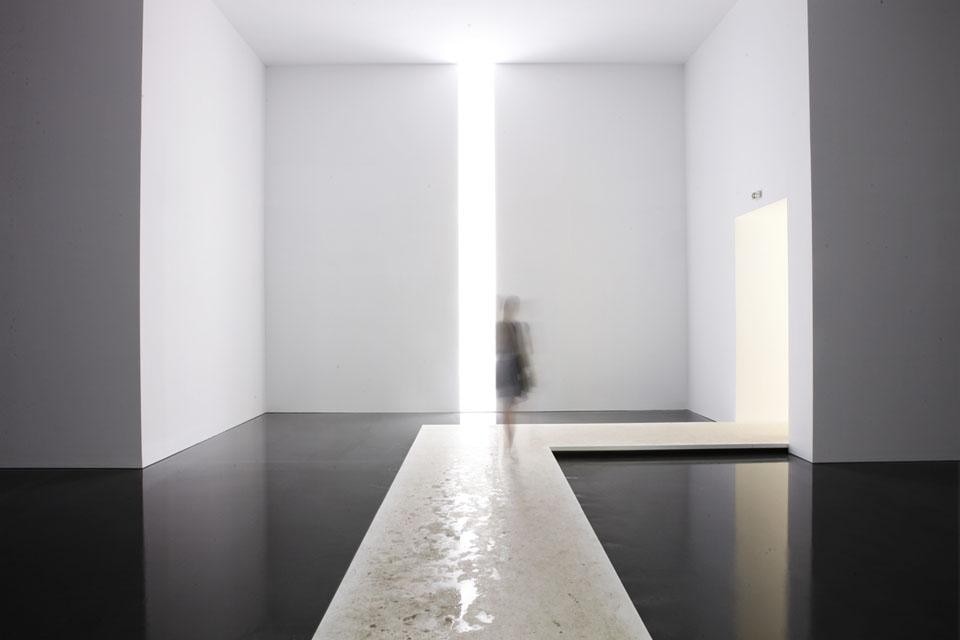The same is true of the country's presence at the European table today. But large and small are closely linked—inextricably global. This year the singularly named Diohandi (b. 1945, trained as an artist and architect), was given responsibility for her country's pavilion and made a radical choice in its execution.
She essentially annulled the historic building by covering it with a wooden structure, transforming it into a cube. The original building can be seen through the gaps in the wood. After entering through a slit in the cube, visitors find themselves on a catwalk surrounded by water with a light on the bottom. It seems like a pleasant experience—hope at the end of the path. But an alarm renders the passage irritating. Visitors enter, have a look and exit immediately. Just enough time for a fleeting impression. One cannot help but think of the parallel to the actual state of Greece.
The pavilion at this 54th Biennale seems, like others this year, extraordinarily consistent with the country's situation. It contains the hypothesis that a simple form of the present (hiding the historic pavilion) which only hints at its past (through the gaps)—not denying it but distancing it—is the only way to get out of trouble, or that it is safe to walk on a path at the bottom of which you can see a light, but the walk is difficult due to the sound. Or that only by relying on the moderation of experienced elders can the crisis be overcome. Ordinary citizens of course.

Simona Bordone
It seems like a pleasant experience—hope at the end of the path. But an alarm renders the passage irritating. Visitors enter, have a look and exit immediately. Just enough time for a fleeting impression.

